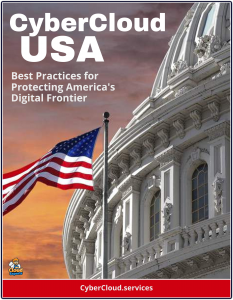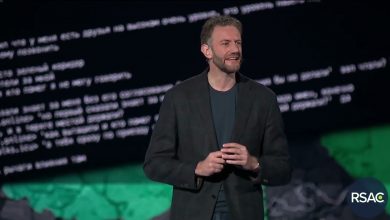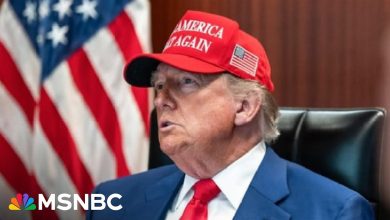 On June 7, 2025, President Donald J. Trump signed an Executive Order to strengthen U.S. cybersecurity by focusing on critical protections against foreign cyber threats and enhancing secure technology practices.
On June 7, 2025, President Donald J. Trump signed an Executive Order to strengthen U.S. cybersecurity by focusing on critical protections against foreign cyber threats and enhancing secure technology practices.
The order amends problematic elements of Obama- and Biden-era Executive Orders (14144 and 13694), removing measures like digital ID mandates for illegal aliens that risked fraud and burdensome software compliance processes.
It directs federal agencies to advance secure software development, improve border gateway security, adopt post-quantum cryptography, and implement the latest encryption protocols. Additionally, it refocuses AI cybersecurity efforts on vulnerability management rather than censorship, aiming to address technical challenges and eliminate fraud while prioritizing national security.
Background: U.S. Government Cybersecurity Strategy
President Trump’s Executive Order (EO) on June 7, 2025, marks a significant shift in the U.S. government’s cybersecurity strategy, emphasizing practical, security-focused measures over regulatory burdens and aligning with broader national security priorities.
To understand its place within the overall U.S. cybersecurity strategy, let’s contextualize it within the evolving landscape of federal cybersecurity efforts, key threats, and historical policy approaches.
The U.S. government’s cybersecurity strategy has evolved over decades to address growing cyber threats from state actors (e.g., China, Russia), non-state actors (e.g., ransomware gangs), and insider threats. The strategy typically balances protecting critical infrastructure, securing federal networks, fostering private-sector resilience, and countering adversaries in cyberspace. Key historical milestones include:
- Obama Era (2009–2017): Emphasized foundational policies like Executive Order 13694 (2015), which authorized sanctions against malicious cyber actors. The Obama administration also introduced the Cybersecurity National Action Plan (CNAP) in 2016, focusing on modernizing federal IT systems, improving critical infrastructure security, and promoting multi-factor authentication.
- Trump’s First Term (2017–2021): Prioritized offensive cyber capabilities, streamlined federal IT modernization (e.g., EO 13800), and strengthened critical infrastructure defenses against foreign adversaries. The administration also established the Cybersecurity and Infrastructure Security Agency (CISA) in 2018 to coordinate national cyber defense.
- Biden Era (2021–2025): Focused on regulatory frameworks, zero-trust architecture (EO 14028), and addressing supply chain vulnerabilities post-SolarWinds (2020). Biden’s EO 14144 (likely a reference to a 2021–2024 order) pushed digital identity systems and software supply chain security, but critics argued it overemphasized compliance over practical outcomes.
The U.S. faces persistent threats, including ransomware attacks on critical infrastructure (e.g., Colonial Pipeline, 2021), state-sponsored espionage (e.g., Chinese exploitation of Microsoft Exchange vulnerabilities), and emerging risks from quantum computing and AI-driven attacks. The National Cybersecurity Strategy (2023) under Biden emphasized resilience, public-private partnerships, and international cooperation, but implementation faced challenges due to regulatory complexity and resource constraints.
Trump’s 2025 Executive Order: Key Provisions and Context
The June 7, 2025, EO reflects a recalibration of these efforts, aligning cybersecurity with Trump’s broader “America First” agenda. It amends prior EOs (13694 and 14144) to address perceived overreaches and inefficiencies, focusing on four core areas:
Amending Prior Policies:
Removal of Digital ID Mandates for Non-Citizens: The EO eliminates requirements from Biden-era policies that mandated digital IDs for illegal aliens, citing fraud risks. This aligns with Trump’s immigration enforcement priorities, framing cybersecurity as intertwined with border security.
Streamlining Software Compliance: It removes burdensome software compliance processes from previous EOs, which likely refers to Biden’s EO 14028 requirements for Software Bills of Materials (SBOMs) and supply chain audits. Critics argued these increased costs for private companies without clear security gains.
Secure Software Development:
The EO directs agencies to prioritize secure software development practices, likely building on NIST’s Secure Software Development Framework (SSDF). This addresses vulnerabilities in software supply chains, a persistent issue exposed by incidents like Log4j (2021) and SolarWinds.
It emphasizes practical implementation over regulatory mandates, reflecting private-sector feedback about compliance fatigue.
Border Gateway Protocol (BGP) Security:
BGP, a core internet routing protocol, is vulnerable to hijacking (e.g., China Telecom’s 2018 traffic rerouting). The EO prioritizes securing BGP, aligning with CISA’s efforts to deploy Resource Public Key Infrastructure (RPKI) and improve routing trust. This strengthens internet infrastructure resilience, critical for national and economic security.
Post-Quantum Cryptography and Encryption:
The EO mandates adopting post-quantum cryptography (PQC) and modern encryption protocols. Quantum computing advancements threaten current encryption (e.g., RSA, ECC), with NIST projecting viable quantum attacks by the early 2030s. Agencies like NIST and NSA have been developing PQC standards since 2016, and this EO accelerates their adoption across federal systems.
This move positions the U.S. to stay ahead of adversaries like China, which is heavily investing in quantum technology. The EO shifts AI cybersecurity efforts away from content moderation and censorship (a critique of Biden-era policies) toward vulnerability management. AI-driven tools can enhance threat detection and patch prioritization, addressing the growing complexity of cyber threats.
This aligns with CISA’s AI roadmap (2024) but reframes AI as a technical tool rather than a regulatory or social control mechanism.
Strategic Context and Implications
The 2025 EO fits into the U.S. cybersecurity strategy by prioritizing actionable, threat-driven measures over bureaucratic frameworks. It reflects several key trends and shifts:
- National Security Focus: By linking cybersecurity to immigration enforcement (via digital ID removal) and foreign threats (BGP, PQC), the EO frames cyber policy as integral to national sovereignty. This contrasts with Biden’s emphasis on domestic resilience and equity-driven cyber initiatives.
- Private-Sector Alignment: Streamlining compliance reflects Trump’s deregulation agenda, aiming to foster innovation while addressing private-sector complaints about costly mandates. This could strengthen public-private partnerships, a cornerstone of U.S. cyber strategy since the 2003 National Strategy to Secure Cyberspace.
- Proactive Defense Against Emerging Threats: The focus on PQC and BGP security positions the U.S. to counter long-term threats like quantum decryption and internet routing attacks, which are critical for maintaining global technological leadership.
- Critique of Prior Approaches: The EO implicitly criticizes Obama- and Biden-era policies for overregulation and misaligned priorities (e.g., censorship via AI). It seeks to reset the balance toward measurable security outcomes.
Challenges and Criticisms
Accelerating PQC adoption requires significant investment and coordination across agencies, which may strain budgets. BGP security enhancements also face global adoption challenges, as routing protocols depend on international cooperation.
Framing digital ID removal as an immigration issue may alienate stakeholders who see identity systems as critical for cybersecurity (e.g., zero-trust architectures). Moving away from AI-driven content moderation could weaken efforts to combat misinformation, a growing cyber-enabled threat, though it aligns with free speech priorities.
Conclusion
Trump’s 2025 EO reorients U.S. cybersecurity strategy toward pragmatic, threat-focused measures, emphasizing secure technology development, infrastructure resilience, and protection against foreign adversaries.
It builds on existing frameworks (e.g., NIST, CISA) while dismantling perceived regulatory excesses from prior administrations. Within the broader U.S. cybersecurity strategy, it reinforces national security as a core driver, aligns with private-sector needs, and positions the U.S. to address emerging threats like quantum computing and AI-driven attacks. However, its success depends on effective implementation, interagency coordination, and navigating political divides in cyber policy.



